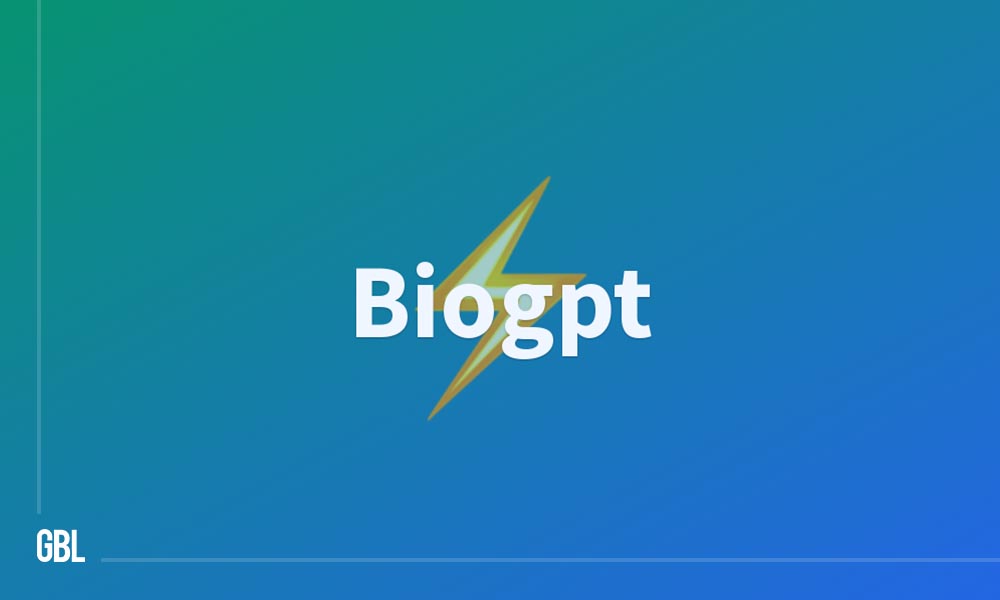Key Highlights
- BioGPT, developed by Microsoft, is an advanced AI language model trained on biomedical data.
- It has the potential to revolutionize healthcare industry by accelerating research, improving diagnostics, personalizing treatments, promoting patient engagement, and enhancing telemedicine.
The recent announcement by Microsoft regarding their artificial intelligence (AI) tool, BioGPT, has claimed to achieve “human parity” in the analysis of biomedical research to provide answers to questions. As with several recent AI advancements, understanding the true implications of this new technology for healthcare can be complex.
What is BioGPT?
The full form of BioGPT is Biological Generalized Pre-trained Transformer. It is a generative language model developed by Microsoft and is an advanced artificial intelligence (AI) model designed to enhance healthcare applications and transform the healthcare industry.
BioGPT is specifically trained on a vast amount of biomedical data like existing research articles, including:
- Scientific literature
- Clinical records
- Genomics, and other healthcare-related sources.
BioGPT In Transforming Healthcare Industry
With its deep understanding of medical knowledge and natural language processing capabilities, BioGPT can potentially transform various aspects of healthcare industry. Below are some ways in which BioGPT can have a significant impact:
- Medical Research and Drug Discovery: BioGPT can analyze complex medical literature, identify patterns, and generate hypotheses to accelerate the research process. It can help in drug discovery by predicting potential drug-target interactions, identifying new therapeutic targets, and optimizing treatment strategies.
- Clinical Decision Support: By analyzing patient data, symptoms, medical history, and relevant literature, BioGPT can provide valuable insights and recommendations to healthcare professionals. It can help in diagnosing diseases, predicting patient outcomes, and suggesting personalized treatment plans.
- Health Monitoring and Disease Prevention: BioGPT can process data from wearable devices, electronic health records, and genetic information to monitor individual health trends, identify early signs of diseases, and provide personalized preventive measures. It can empower individuals to take proactive steps in managing their health.
- Patient Engagement and Education: With its natural language generation abilities, BioGPT can create patient-friendly educational materials, answer medical queries, and provide information on diseases, medications, and treatment options. It can improve patient engagement and promote health literacy.
- Telemedicine and Remote Healthcare: In the era of telemedicine, BioGPT can support remote healthcare services by assisting in triage, providing preliminary diagnoses, and offering guidance for non-urgent medical issues. It can alleviate the burden on healthcare systems and enhance access to quality care.
The integration of BioGPT into healthcare industry has the potential to augment medical professionals’ capabilities, accelerate research breakthroughs, improve patient outcomes, and promote efficient healthcare delivery. It is important to ensure ethical considerations, privacy safeguards, and human oversight to fully leverage the benefits of this powerful AI technology.
FAQs
1. What is BioGPT?
BioGPT is an advanced AI language model developed by Microsoft that is specifically trained on biomedical data to enhance healthcare applications.
2. How can BioGPT transform healthcare?
BioGPT has the potential to revolutionize healthcare by accelerating research, improving diagnostics, personalizing treatments, promoting patient engagement, and enhancing telemedicine.
3. What are the challenges of using BioGPT in healthcare industry?
The challenges of using BioGPT in healthcare industry are:
- BioGPT is its accuracy and reliability may not be as high as human experts.
- BioGPT could be used to generate misleading or inaccurate information, so it is important to use it with caution.









